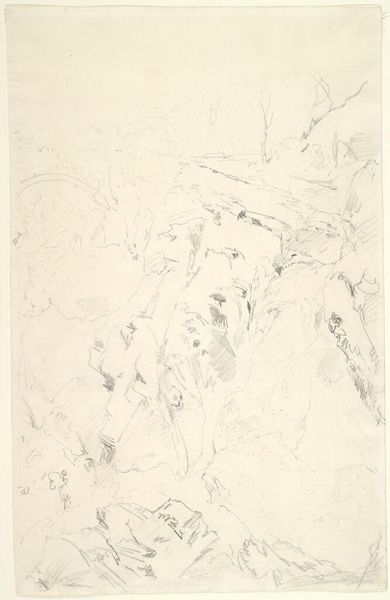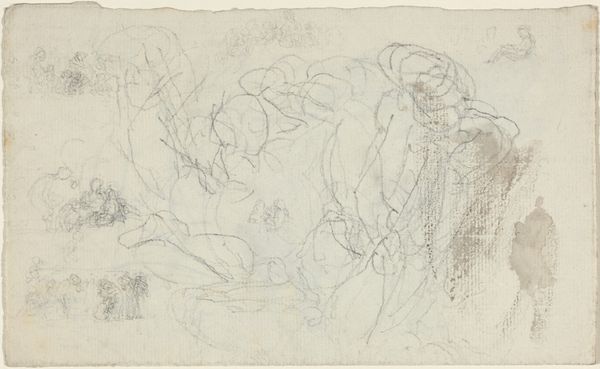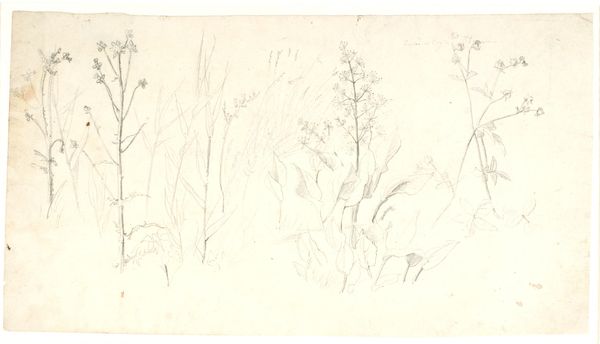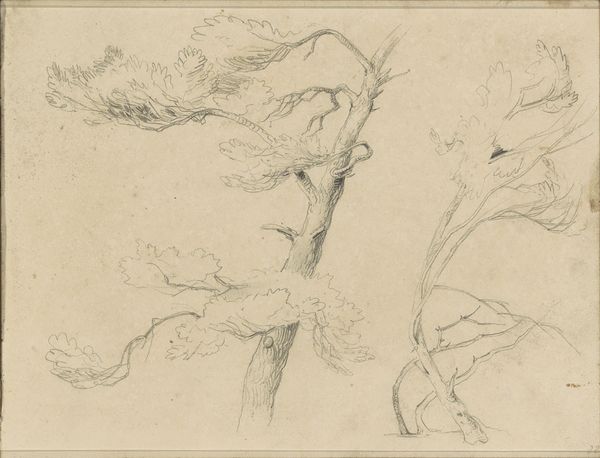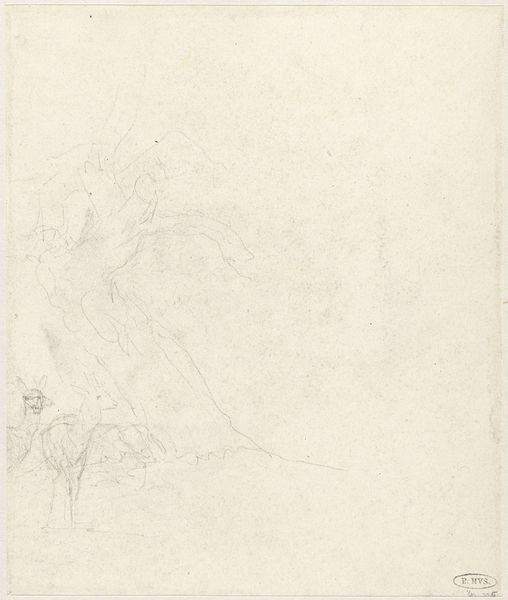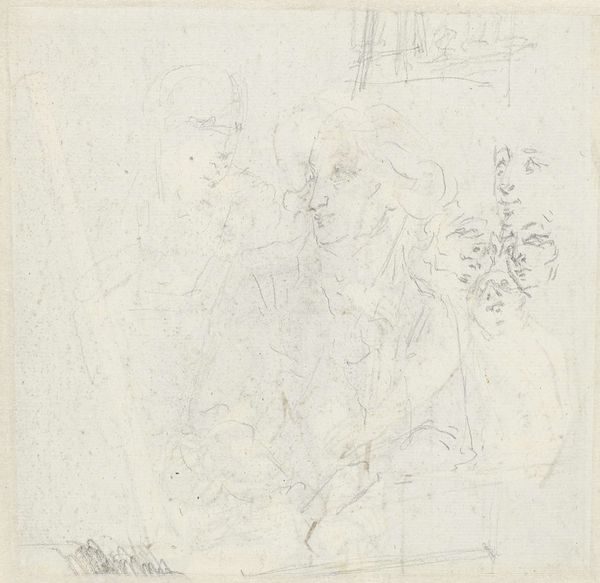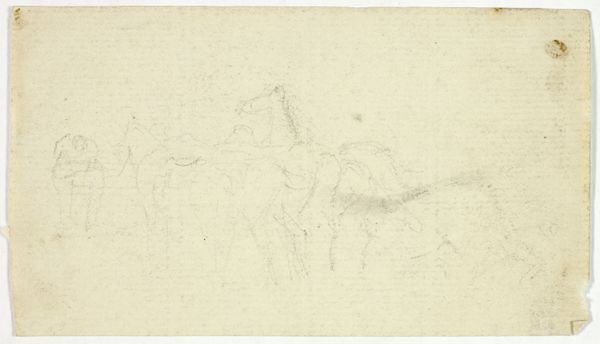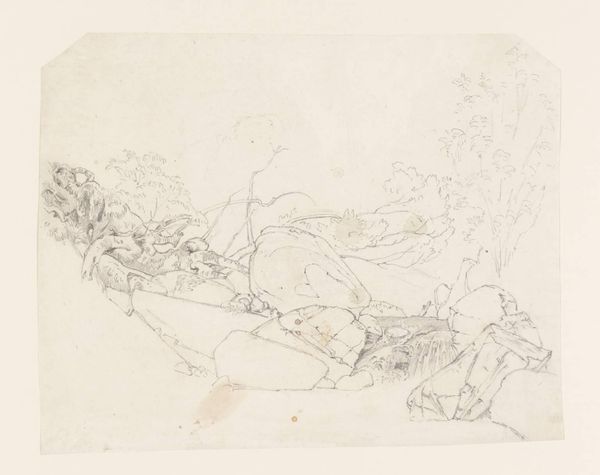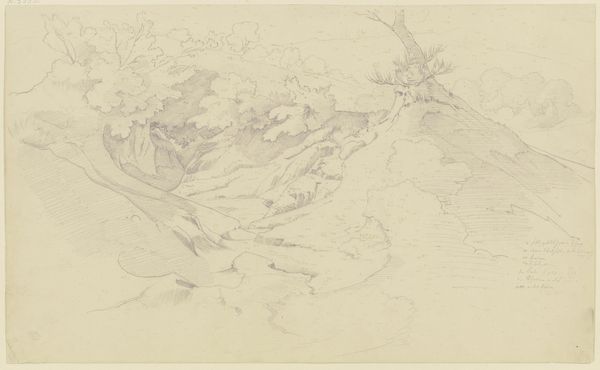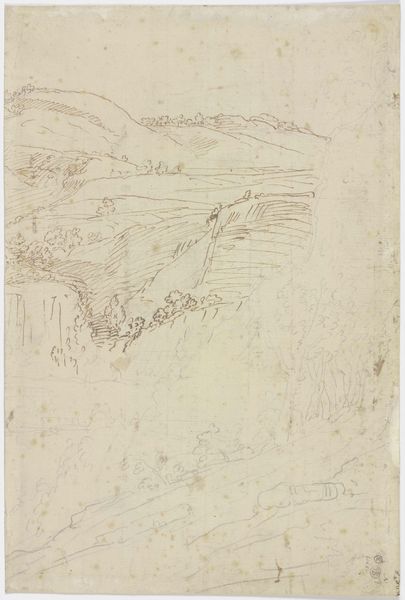
drawing, pencil
#
drawing
#
landscape
#
etching
#
romanticism
#
pencil
#
botanical drawing
#
pen work
Dimensions: 177 mm (height) x 245 mm (width) (bladmaal)
Curator: This is "Plant Studies" by Dankvart Dreyer, created between 1837 and 1839. It's currently held here at the SMK, the National Gallery of Denmark. Editor: My first impression? A fragile record. It's almost ghostly in its lightness, like the memory of a garden. Curator: Indeed. Looking at the composition, Dreyer meticulously renders various botanical forms with delicate pencil strokes and what appears to be some pen work. Note the strategic use of empty space to create visual hierarchy among the plants he depicts. Editor: I see a reflection of the Romantic era's fascination with nature, specifically with documenting its details. Botanical drawings such as this would have aided scientific understanding while feeding an increasing desire to catalog the world during the burgeoning age of museums. Curator: I agree entirely. Consider the rhythmic repetition of leaves, countered by unique blossoming details, indicative of structural botany typical in academic art. How the interplay creates visual tension—almost like he is presenting these natural elements for inspection, doesn’t he? Editor: Yes, almost. The piece reflects growing trends in the burgeoning age of botanical sciences when categorizing nature demonstrated humanity’s progress through taxonomy and visual capture of scientific concepts like growth cycles, plant structure and its social implications, all becoming visible across public awareness campaigns in that historical time. Curator: Exactly, Dreyer uses line and texture to mimic how form defines both visible details that structure plant growth! The precision reveals what it represents culturally. Editor: But look again at the delicate rendering. Perhaps there is also evidence of Romantic era philosophies exploring individual interpretation? Botanical documentation in academic spheres met with popular awareness. How interesting to view through historical moments of intersection that are visible on exhibit within museums today… Curator: A perfect example. Thank you for spotlighting how social contexts affect its deeper messages. Editor: My pleasure! Now, it is worth mentioning its sheer artistry given this interesting background of societal movements that define artistic styles over decades since being conceived. What do YOU think?
Comments
No comments
Be the first to comment and join the conversation on the ultimate creative platform.
